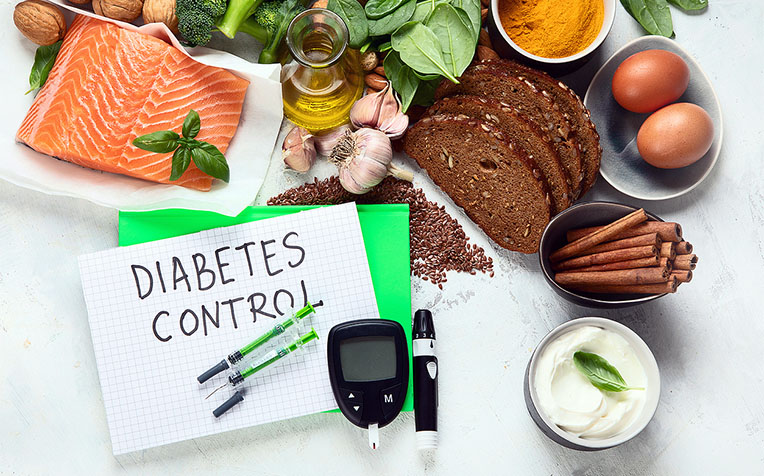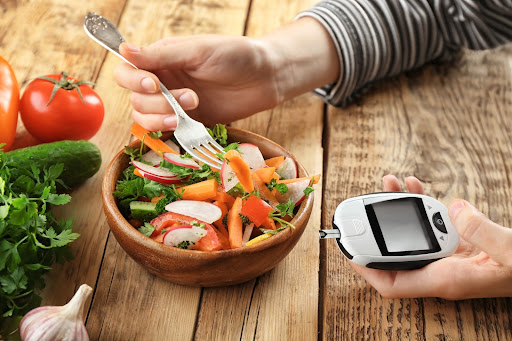If you or a loved one has been diagnosed with type 2 diabetes, you know how crucial it is to manage your diet effectively. Proper meal planning for diabetics type 2 can help regulate blood sugar levels, promote weight loss, and reduce the risk of complications. However, navigating the world of diabetes-friendly meals can be daunting, especially if you’re new to this journey. Fear not! This comprehensive guide will equip you with the knowledge and strategies to create delicious, nutritious, and diabetes-friendly meals that nourish your body and satisfy your taste buds.
As someone living with type 2 diabetes, meal planning is a vital component of your overall health management. By carefully planning your meals, you can ensure that you’re consuming the right balance of nutrients, controlling portion sizes, and maintaining stable blood sugar levels throughout the day. This not only helps you manage your condition more effectively but also reduces the risk of long-term complications associated with diabetes. Whether you’re struggling with public speaking or seeking inner peace through meditation, incorporating mindfulness exercises into your routine can greatly benefit your overall well-being. Additionally, engaging in emotional regulation activities can help you maintain a positive mindset throughout your journey. With the right strategies in place, meal prepping on a budget becomes easier and more enjoyable.
Understanding the Basics:
Before diving into meal planning specifics, it’s essential to understand the fundamental principles of a diabetes-friendly diet. The primary goal is to maintain stable blood sugar levels by controlling the intake of carbohydrates, which directly impact glucose levels in the body. However, it’s not just about restricting carbs; it’s also about choosing the right types of carbohydrates and balancing them with lean proteins, healthy fats, and fiber-rich foods.
Read Also: 7 Delicious and Nutritious Meal Prep Recipes for Diabetes Management
Creating a Balanced Meal Plan:
Effective meal planning for diabetics type 2 involves creating a balanced meal plan that incorporates a variety of nutrient-dense foods. Here’s how you can get started:
- Carbohydrates: Focus on complex carbohydrates like whole grains, legumes, fruits, and vegetables, which are high in fiber and digest more slowly, helping to regulate blood sugar levels. Limit your intake of simple carbohydrates found in sugary drinks, pastries, and highly processed foods.
- Proteins: Lean proteins, such as chicken, fish, eggs, and plant-based sources like lentils and tofu, should be a part of every meal. Protein helps you feel full for longer and can also help manage blood sugar levels.
- Healthy Fats: Incorporate healthy fats like avocados, nuts, seeds, and olive oil into your meals. These fats can help improve cholesterol levels and promote better blood sugar control.
- Fiber: Fiber-rich foods like vegetables, fruits, whole grains, and legumes are essential for maintaining good digestive health and regulating blood sugar levels. Aim for at least 25-30 grams of fiber per day.
- Portion Control: Controlling portion sizes is crucial for effective meal planning. Use measuring cups, food scales, and visual cues to help you determine appropriate serving sizes.
Read Also: 10 Diabetes-Friendly Snack Ideas to Satisfy Your Cravings
Meal Prepping for Convenience:

One of the best ways to ensure you’re sticking to your meal plan is to prepare your meals in advance. Meal prepping not only saves you time during the week but also helps you stay on track with your dietary goals. Here are some tips for successful meal prepping:
- Plan your meals: Take some time at the beginning of the week to plan your meals and create a grocery list. This will help you avoid impulse purchases and ensure you have all the necessary ingredients on hand.
- Batch cooking: Cook larger portions of healthy meals and divide them into individual portions for easy reheating throughout the week.
- Invest in containers: Invest in high-quality, reusable containers to store your meals. This not only helps reduce waste but also ensures your meals stay fresh and retain their flavor.
- Freeze portions: If you’ve cooked too much, freeze individual portions for later use. This way, you’ll always have a quick and healthy meal option available.
Read Also: The Ultimate Guide to Meal Prepping for Busy Families
Comparison Table: Popular Diabetes-Friendly Diets
To help you navigate the various dietary approaches, here’s a comparison table of some popular diabetes-friendly diets:
| Diet | Carb Intake | Protein Sources | Fat Sources | Pros | Cons |
|---|---|---|---|---|---|
| Mediterranean Diet | Moderate carbs from whole grains, fruits, and vegetables | Fish, poultry, legumes, nuts | Olive oil, avocados, nuts | Promotes heart health, rich in antioxidants | Can be high in calories if not portion-controlled |
| DASH Diet | Moderate carbs from whole grains, fruits, and vegetables | Lean meats, poultry, fish, legumes | Nuts, seeds, plant-based oils | Helps lower blood pressure, rich in nutrients | Can be restrictive for some individuals |
| Low-Carb Diet | Low carb intake, focuses on non-starchy vegetables | Meat, poultry, fish, eggs, nuts | Olive oil, avocados, coconut oil | May improve blood sugar control, promotes weight loss | Can be difficult to maintain long-term, may lack certain nutrients |
| Paleo Diet | Moderate carbs from fruits and vegetables | Meat, poultry, fish, eggs, nuts | Avocados, coconut oil, olive oil | Eliminates processed foods, rich in nutrients | Restricts grains and legumes, which can be nutrient-dense |
Remember, the best diet for you is the one that fits your lifestyle, preferences, and overall health goals. Consult with a healthcare professional or registered dietitian to determine the most suitable approach.
Read Also: Dining Out with Diabetes: Tips for Making Healthy Choices
External Resources and Support:
Meal planning for diabetes can be challenging, but you don’t have to go through it alone. Here are some valuable external resources and support systems to aid you on your journey:
- Diabetes Organizations: Organizations like the American Diabetes Association (ADA) and the Canadian Diabetes Association (CDA) offer a wealth of information, meal planning tools, and resources specifically designed for individuals with diabetes.
- Registered Dietitians: Consult with a registered dietitian who specializes in diabetes management. They can provide personalized meal plans, nutrition education, and ongoing support to help you achieve your health goals.
- Online Communities: Join online communities and support groups for individuals with type 2 diabetes. These platforms offer a space to share experiences, recipes, and tips, as well as provide encouragement and motivation.
- Diabetes-Friendly Cookbooks: Invest in diabetes-friendly cookbooks that offer a variety of delicious and nutritious recipes tailored to your dietary needs.
Remember, managing type 2 diabetes is a journey, and it’s essential to be patient and kind to yourself along the way. With the right meal planning strategies, support system, and mindset, you can take control of your health and thrive.


